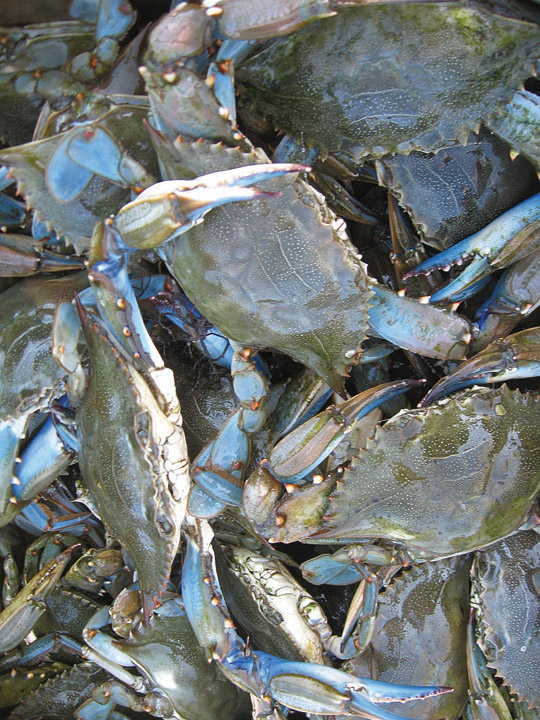Often they are passed without a second thought.
However, what lies at the bottom of those small buoys bobbing near the shallows is a means to provide crabbers with a livelihood and seafood lovers with coastal delicacies.
Crabbing, or educated gambling as local crabber Sam Romano refers to it, is by nature an ironic fishery.
Romano, an alumnus of the University of North Carolina Wilmington, started crabbing after graduation and after working in a fish market throughout college. His coastal Virginia roots steered him to the industry and he had to learn the trade through trial and error.
“I’m from Virginia Beach and crabbing in the Chesapeake Bay and northern North Carolina is more of an industry than it is down here. My dad worked part time on a crab boat so I knew a little about it,” he said. “But it was definitely a self-taught process; there is no doubt about that.”
In 2009 Romano, his brother Joe and friend Nathan King opened Seaview Crab Company in Wilmington and Romano acquired a depth of local knowledge about the blue crab, which was the primary catch in the beginnings of his foray into the commercial fishing industry.
Locally, crabbers struggle to meet the demand for their catch between Memorial Day and Labor Day when the consumers’ cravings are highest, and when it comes to the months of plentiful crab hauls in October and November, the market demand is lower.
“We are struggling for crabs through Labor Day because there is so much demand in that time,” Romano said. “It is what every crabber goes through: when you are catching the most of them you can’t sell them all, and when there is more demand you can’t get enough.”
Knowing where to drop his crab traps is all about practice and knowing the conditions, Romano said.
“We are just out there all the time and the more you tap into the tempo of how things are moving and where things are going, the more you know exactly where to put your pots,” he said. “It is like educated gambling, more or less. You want to make sure you are not risking everything by going all over the place but you also don’t want to play it too conservatively.”
Once dropped, the crab trap and the baitfish — usually menhaden — take care of the rest. Each crab trap has multiple entrances, or stairwells, leading to the bait well in the center of the trap. The crabs have to travel up the stairwells to get near the bait. Romano said because crabs usually try to escape upward, they do not instinctively go back down the stairwell and are therefore trapped.
The traps sit overnight, luring more blue and stone crabs with the promise of an easy meal. The next day, they are pulled up, revealing the night’s catch. Romano said the number of crabs caught in any one day could range drastically.
“The range of blue crabs we catch is anywhere from 120 pounds to 1,000 pounds on a good day,” Romano said. “It is a big range but generally a good day is 10 bushels or 400 pounds.”
Blue crabs represent the majority of the haul with an average stone crab catch averaging 5-10 pounds in one day. Unlike the blue crab, which is caught whole and used for dishes like crab cakes, the only piece of the stone crab used is its claw. Rather than waste the rest of the crab for the claw, Romano and other crabbers clip off the stone crab’s claw, and throw the crab back into the water to regenerate a new claw. Romano said it usually takes 2-3 months for a stone crab claw to completely regenerate.
As far as the blue crab hauls, Romano said the wide range is due to the crab’s monthly molting cycle that coincides with a full moon.
“They are basically getting bigger and more plentiful throughout the year,” Romano said. “They shed their shells and grow. So by October or November they do their final shed and start moving to the places they go in the wintertime, and that is when you catch the most of them. In about a week we will start getting the first shed of the year and that starts off the season, but they are still not extremely plentiful.”
While the months of October and November typically yield the largest crab hauls, Romano said the summer months could be equally plentiful if the moon cycle lines up just right.
Friday, April 11, however, was not one of the good days, Romano said, adding that he is looking forward to the fat days.
“Today I caught right at the bottom and it was one of the 10 worst days of the year. But in October or November I’m catching about 20 or more bushels of crab,” he said.
email [email protected]




